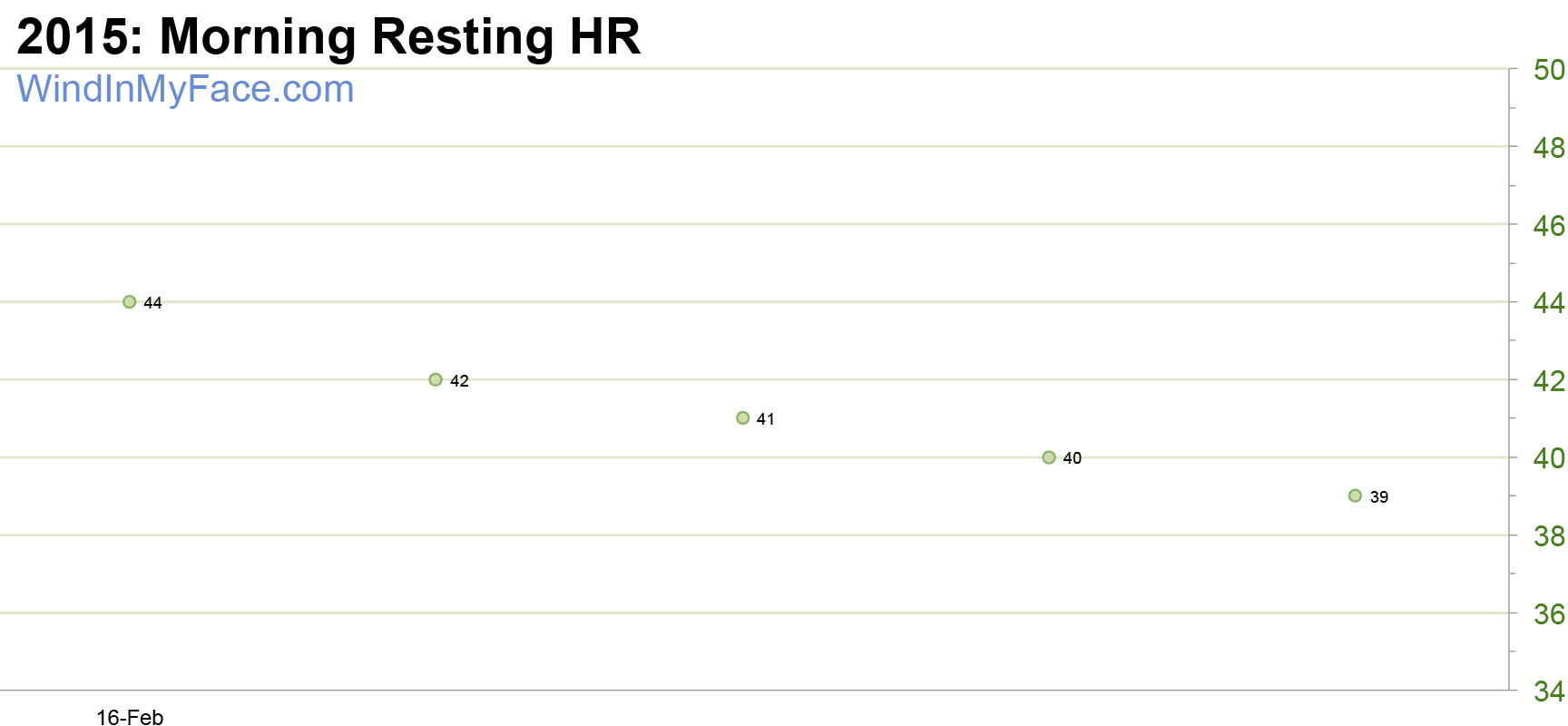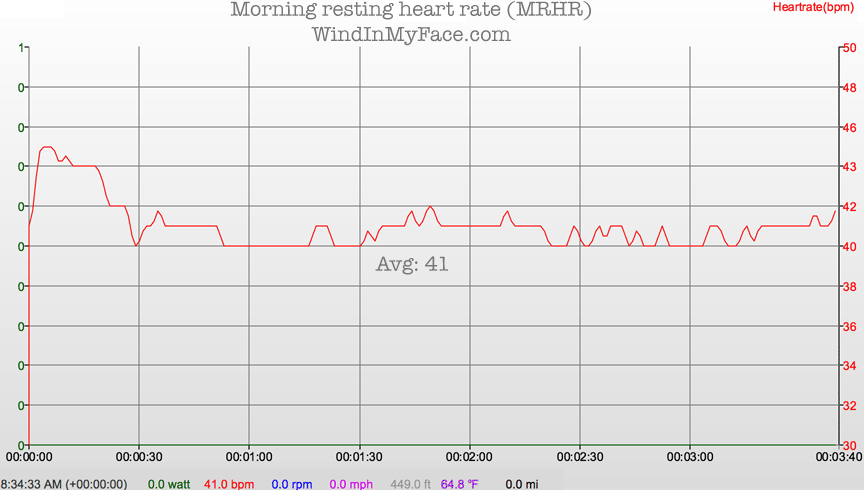Training and Fitness: Why and How to Track Morning Resting Heart Rate (MRHR)
I should have been tracking this at the start of training season, but hadn’t. So I’ve just started again. So far, there are only three data points shown below, the first being the day after two very hard training days (4 hour ride and 3 hour ride on two weekend days). So the 44 figure is on another moderate day (2 hours); the 42 bpm follows an easier day, and the 41 bpm figure follows a 1/2 of baseline workout (600 kilojoules).
It's only a few beats drop, but the resting heart rate can be seen to decline a bit over the course of the week as recovery progresses from the hard ride on 16 Feb, in spite of a 6 day rolling average workout energy of 1952 kilojoules per day (1866 kilocalories/day).
3248, 2296, 1391, 667, 2541, 1573 = 1952/1866 kilojoules/kilocalories / day
(first figure 6 days old, last figure newest)
The workouts following the hardest and longest 32348 kj workout (on a Saturday) were designed as disciplined extensive endurance workouts so as to stress only the aerobic system, not muscle strength. The strategy clearly was effective.
Fully rested (taking 2 days off), I expect something around 38 (to be confirmed, but I have observed figures as low as 32 in the past).

Tracking Morning Resting Heart Rate (MRHR)
Tracking MRHR gives clues as to recovery or illness and other factors:
- MRHR will be relatively high the day after a hard workout (5 to 10 beats, depending on a variety of factors).
- MRHR will be up by 5 to 25 beats in the case of illness. Skip training if illness seems apparent; it’s a red flag.
- MRHR can do odd things if overtrained; any significant variation from typical is cause for some thought at least. Recording heart rate overnight against a “known well rested” baseline adds a lot more insight than just a morning check.
- Hydration and stress and medications can affect MRHR.
- MRHR drops steadily as fitness increases, thus it is an excellent long-term tracker of fitness gains (provided one allows for full recovery).
- MRHR is generally lower with age, at least for fit people (maximum heart rate drops by about 1 beat per year, but minimum heart rate also declines a bit).
- Heart rate is a personal measure; don’t bother comparing your own heart rate to someone else’s; there is no real “normal”, only a very wide range of physiological normals. Do not confuse statistics of populations with your own personal physiology. This is why tracking your own normal is important.
How I measure MRHR
- Before rising in the morning, strap on heart rate band*.
- Lie flat on back, relax completely, record a multi-minute interval at rest.
Any movement (even raising an arm) can push HR up a few beats, so be consistent in position and lie still. Take the *average* (mean) heart rate over the lowest 2-minute interval. If the device does not record, observe the heart rate on the device; use the consistently lowest reading (not necessarily the lowest number).
* Counting heart beats by sensing one’s own pulse introduces error by a few beats because some muscle activation is generally required to to do (at complete rest on one’s back, even a little muscle activation can introduce 10% error, e.g., 4 beats on top of 40). But as long as done consistently each day, this is fine for the purpose of trends (but the true MRHR may be a few beats lower).
Shown below is a 3+ minute recording at rest averaging 41 beats (bpm).




